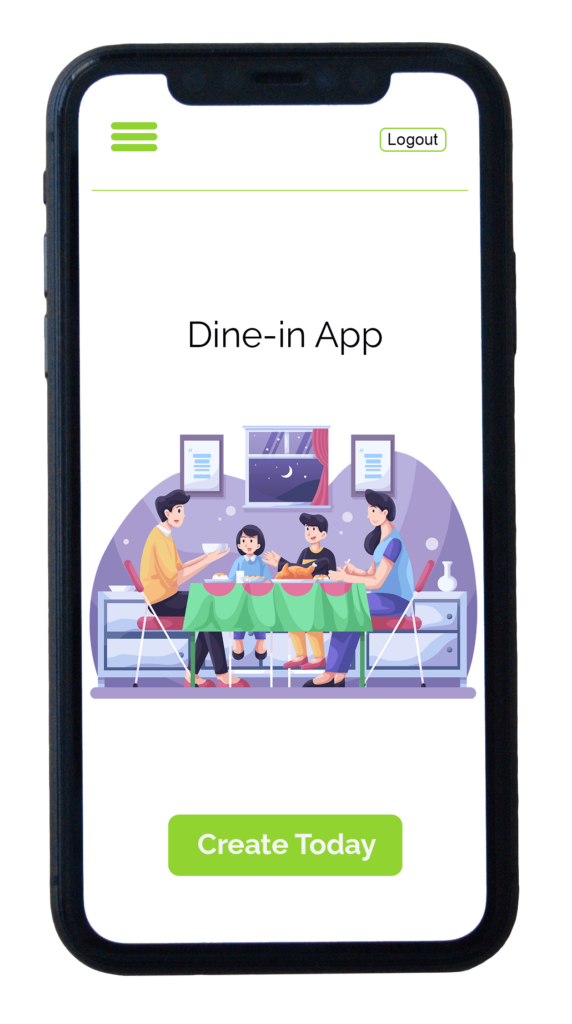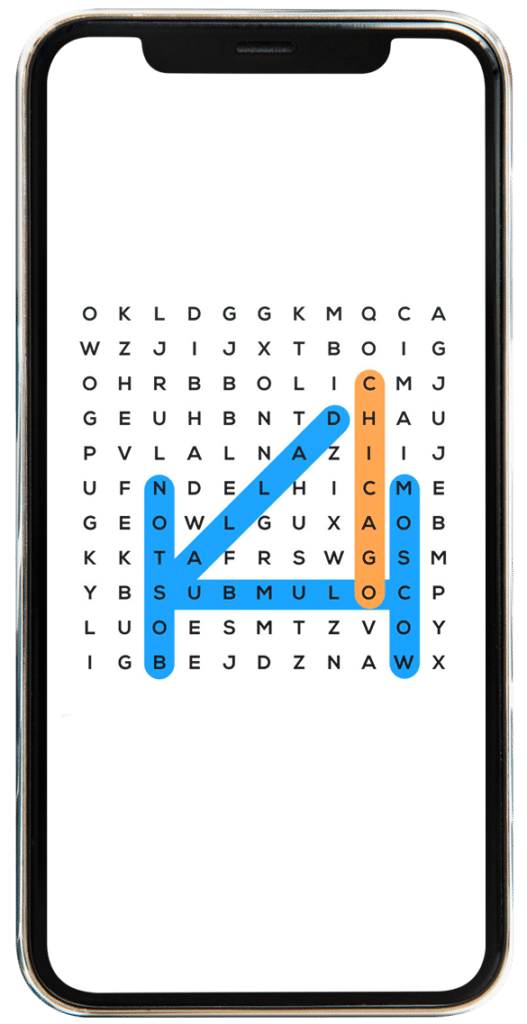Creating an app without coding is a great method of bringing concepts to life and spurring business expansion in the digital era. Today, anyone can design completely working apps without substantial coding experience thanks to no-code platforms. Business concepts can now be realized thanks to no-code technologies. No-code platforms allow employees with ordinary technical abilities and business acumen to create apps. These platforms’ adaptability and capacity to provide business solutions more quickly have drawn much attention lately.
App-building platforms with no-code solutions use 70% less resources than traditional ones. They have solved the drawbacks of conventional app development, enabling non-technical staff members to develop mobile app concepts into reality. Everything you need to know to create an app without knowing the code is covered in this post.
Can People Build an App Without Coding?
Absolutely! If you want to create an app without coding, you must use an app builder. These are programs that have pre-programmed templates and functionality that you may change and personalize. Design unique apps by modifying the layout, content, and functions.
The mobile app development process has been simplified to the greatest extent possible. Regardless of your technical talents, you will be able to design fully functional software that meets your team’s demands.
When considering the necessary software tools a business or department requires, you typically begin with basic office productivity tools such as email, spreadsheets, word processing, and others. Most organizations want to continue using these low-cost technologies for as long as possible. Therefore, email and spreadsheets are employed for most of their business processes. But you quickly discover that an Excel static database will not be sufficient. Something compatible with all of your data is required. Something that enables autonomous data processing and transportation. That is precisely what apps for software do. They speed up response times significantly by automating simple processes that formerly required manual data transmission.
The Benefits of Creating an App Without Coding
Beyond the typical “ease and convenience,” no-code has many advantages.
- Decreased time to market
Fast here refers to extremely fast. A basic app can be completed in a few hours, while a complex client business app may take several weeks. Conventional development timetables, on the other hand, begin with “months” and might go on for quite some time. You may create custom business solutions ten times faster using no-code platforms than traditional development methods.
- Making updates is easy
Using no-code tools is quite simple. They simplify the learning process and are intuitive. Even high school students may use them because they are so simple. Most have drag-and-drop capabilities that let you quickly and easily construct enterprise-grade apps for customers with no experience. Citizen developers may see what they are developing in real-time and adjust as needed because it’s all visual.
- Better collaboration
The relationship between business divisions and IT is somewhat strained by traditional app development. Business divisions give instructions to IT, which uses them to produce apps that might or might not work. Projects are delayed and may not meet expectations when there is no teamwork.
Transparency and cooperation amongst teams are encouraged by no-code platforms. Business teams get real-time access to what IT is working on. Translation errors are avoided, and tasks are finished on schedule. Furthermore, engineers and business analysts can participate and assist in bringing a project to life since code is not required.
- Costs saving
Specialized engineers are needed for complex coding tasks, and apps also require upkeep. Updating outdated systems could be expensive for the business and an IT department. More code is needed to alter or fix a complex app. It could be necessary for an organization to maintain legacy apps.
Legacy code maintenance is eliminated with no code.
- Eliminates shadow IT
Some business users use solutions that IT has not approved to supply solutions more quickly. Studies reveal that 41% of non-developers produce their own solutions. IT is free to rule, while business users are free to produce. Transparency and cross-team cooperation are present.
Simple settings are provided by no-code app creation so that non-IT staff members may produce apps. By giving employees such tools, a business allows innovative staff members to produce apps in a regulated setting that has been approved by IT.
- The No-Code Approach to Unlock Citizen Development Excellence
Legacy code maintenance is eliminated with no code. Additionally, the platforms are compatible with current business systems, enabling developers to modify what functions properly and preserve what does not. IT and business teams may concentrate on high-value work and produce apps more quickly when there are no maintenance fees.
Thank you for reaching us!
AppsGeyser is a free mobile app generator that lets you build an app in three simple steps. It was released in 2011.
With the declarative interface of a no-code builder, you may drag and drop pre-coded elements wherever you want them to go, and the code will adapt. You may quickly create games and make changes while you’re on the go with the no-code app creator. Tailor the material to your brand’s goals. To add elements that match your game type and business sector, just point and click. Using AppsGeyser is the ideal way and option for unique app creation.
How to Create an App Without Coding in 6 Easy Steps
Follow these easy 6 steps and produce a mobile app without code knowledge fast.
Step 1: Choose the right platform
Various app technologies are supported by no-code app development platforms. To choose the best platform, business teams and IT must compare app needs with no-code technology components. Data capabilities, user interface (UI) capabilities, integration capabilities, business logic capabilities, and process and workflow capabilities are examples of common technological components.
Step 2: Pick a template
Using templates makes app development simpler. The kind of app you wish to build should be reflected in the template you select. Every template has characteristics based on the purpose of the business. An HR app template, for instance, it is easier for HR staff to produce apps for functions like offboarding and onboarding new hires.
Step 3: Branding
Although the main design components are added to app templates, in order to produce a more customized app, you might need to alter the layout, color scheme, or app icon. You may view any changes in real time with AppsGeyser’s editor by using the app preview feature. Rebrand your app by altering its design, typeface, color palette, and logo to produce a more unique end product.
Step 4: Rewrite the content
Pre-written material is included with every template, which you may modify to suit your needs. For instance, you can change the onboarding template’s content to better suit your company’s needs. To enhance the interactivity of your app, you may also add new tabs.
Step 5: Add features
Now complete your app with all the functionality you require. For instance, specify who must view the products in order to accept the purchase if you’re automating a purchasing workflow. Does the document need to be approved by several people? Establish requirements, due dates, and who must view the data at each stage.
Step 6: Publish the app
Once your app has all the functionality you want, release it. See how your new app works by giving it a test run. Recruit a few employees from your business unit to test it and provide comments. U use your app as soon as it goes online.
Examples of apps that can be built without coding
Take a closer look at the examples of apps to produce app with no coding.
1. Procurement app
Organizations may automate the whole source-to-pay cycle using a procurement app. In addition to managing contracts, generating invoices, processing payments, and analyzing expenditures with ease are all capabilities of procurement staff. Users of the app have total control over all procurement procedures. Companies have insight into all suppliers and transactions and monitor their spending from one central spot. Advanced reports on orders, purchases, invoices, and payments can be produced by them.
2. Performance management system
A performance management system increases worker productivity, which enhances business performance. HR managers may quickly ascertain which workers are putting in more effort and make well-informed judgments about staffing. The system promotes a merit-based workplace culture and meets organizational goals by providing a data-driven approach to personnel management.
3. OKR (objectives and key results) system
Google and other elite businesses use the potent OKR goal system. Teams and individuals use an OKR system as a collaborative goal-setting approach to create ambitious objectives with quantifiable outcomes. It assists companies in achieving their goals, increasing staff engagement, and concentrating on their main objectives.
4. IT asset management system
This technology refreshes data continuously, assisting IT teams in reducing waste and accepting optimum use of resources. By minimizing unnecessary purchases and lowering support and license expenses, they save money. The app ensures that IT assets are precisely installed, tracked, updated, and disposed of. Improved control lowers risks and ensures adherence to security and legal requirements.
5. Leave management system
Leave management could be laborious and time-consuming if done by hand. A leave management system provides managers with precise records of past, present, and future leave as well as effective work hour tracking. They use straightforward workflows to manage personnel information. Payroll processing, approving payments, and maintaining compliance have become simple.
6. Employee management system
This solution offers an affordable means of streamlining HR procedures. It increases worker productivity and aids HR in finding strategies for attracting and keeping talent. It also relieves administrative duties for HR specialists. They reduce compliance risks, maximize efficiency, and manage expenses.
7. Expense management system
Managers monitor employee spending and confirm that purchases are made for approved business uses by using expense management software. By automating the procedure, the technology simplifies the receipt-to-reimbursement workflow. It guarantees workers stick to expenditure caps and reduces fraudulent and duplicate payments.
8. Bug tracking system
During software testing, a bug-tracking system tracks defects more easily. Various goods could have several bugs that require assessment, tracking, and prioritization when it comes to debugging. The system offers a single, easily accessible location for managing and fixing all product issues. It facilitates smoother team cooperation and quickens the creation process.
9. Applicant tracking system
Employers who use applicant tracking systems report that the caliber of the applicants they hire has increased, according to 78% of recruiters. Using this app, a recruiting team may streamline manual operations and get more insight into the hiring process. It improves communication between candidates and hiring managers.
10. Professional services executive dashboard
By effectively managing client inquiries and tasks, this software increases team efficiency. The stage-based inquiry board makes it simple for users to keep track of client inquiries. The dashboard facilitates the easy collection of client service feedback while providing real-time information and charts. It incorporates several professional services with ease.
5 Essential Features of No-Code App Builder
Why is AppsGeyser unique?
- Pre-made application template: The application builder offered by AppsGeyseris geared toward quick, easy construction and modification. For this reason, having a platform that offers app templates is beneficial. App templates are resizable programs that show the most typical elements. One common business practice is the leave request process, for instance. Rather than having to start from scratch, a decent, fast app builder can provide a simple “leave request” app that you may customize. You’ll almost definitely get a high grade for that feature.
- Support for visual creation: The best app builders use low-code, no-code, or zero-code approaches to assist you avoid writing lines of code. Data flow is depicted visually by arranging the data operators as shapes connected by arrows on the screen. With one exception, though: the application is your own visual depiction. It is perfect for processing and distributing app software requirements quickly.
- Drag and Drop Option: Create and modify the app by dragging and dropping options.
- Single Interface: To produce, test, and deploy apps on the go.
- Customization: Minimal code may be used to construct customizable components.
- Lifecycle supervision: An app developed with AppsGeyser app builder is never finished from the start. The first iteration seeks to examine and ascertain the architecture of the solution stack. You’ve got yourself a winner if your AppsGeyser lets you change organizational models and processes as the app grows.
- Compatibility across platforms: The end-user of the AppsGeyserapp creation tool is just as vital as the developer. Today’s business users work across multiple platforms, with companies letting customers use their own devices or offering PCs, laptops, and even portable gadgets. This means that the app you create for a computer, specialized desktop program, cloud service, or mobile device could be used by any employee of yours. As a result, cross-platform functionality is a widely regarded app builder feature. If your app builder software lets you build apps that work on several platforms, like AppsGeyser you’ve got a winner on your hands.
- Designers’ WYSIWYG: If an app builder tool is going to be used to create apps that involve data collection through forms, then drag-and-drop functionality is more of a need than a luxury. AppsGeyser has the drag-and-drop functionality available.
- Fluid forms: Alter every aspect of the form, including the components, data sources, and layouts, to produce entirely original forms.
- Graphical workflows: Define the route your information takes throughout the process by using basic visual workflow automation.
- Access control: To establish responsibilities and accessibility, specify user roles, levels, and the kind of form data.
How to Build a No-Code App With AppsGeyser
Assume for a moment that you are searching for a solution to help you manage your buy orders and buy requisitions, among other procurement procedures.
You need to set up custom fields and procedures unique to your business model and link them to a vendor list, so you won’t be able to use an off-the-shelf solution. Nevertheless, you may use a business process app creation platform to design the exact app you require and link it to your database.
This is how fast you can prepare your app for a business process launch using a platform like AppsGeyser.
- Specify roles: Who will use the app? What kind of permission do they require? What kind of safeguards ought they to put in place?
- Describe the data sources: Which data type will you be working with? Which city is it located in? Does the situation change or stay the same? The fundamental idea behind a no-code platform is to create and modify business workflows and procedures that a specific platform adheres to. AppsGeyser is flexible and accessible on all platforms, models, and apps. Any platform, service, or data source may provide information and data to be merged.
Key takeaways
Anyone who is eager to learn may now create apps. Specialized personnel may use them to build automated processes and workflows. Chatbots powered by no code may assist clients in quickly finding the information they require. Employees can also quickly insert consumer surveys and questionnaires.
Here are the key takeaways:
- Simple to apply modifications: Other software requires human intervention to be modified. With AppsGeyser, you can do everything on your own.
- Complex processes: If your software has numerous intricate procedures, AppsGeyser ensures that all procedures are followed to the letter and that everyone is informed about the status of the process at all times. Nothing gets lost.
No-code accelerates app creation and provides IT with the ability to monitor and control modifications made by qualified staff. They operate independently instead of depending on IT for assistance. AppsGeyser gives businesses a centralized platform to accelerate their digital transformation.


